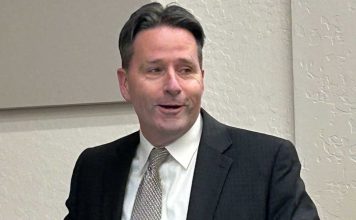Anne is re-reading The Great Brain series by John D. Fitzgerald,
a semi-autobiographical account of the author’s boyhood.
Anne is re-reading The Great Brain series by John D. Fitzgerald, a semi-autobiographical account of the author’s boyhood. My daughter likes reading about the scrapes John D. gets into while trying to match wits with his conniving elder brother, Tom D. I like the portrait it paints of small town life 100 years ago.
For example, there was no public high school in Adenville. After completing sixth grade, most kids began helping their fathers during summer vacation and after school. Some worked for other businesses in town. Some stayed in school through eighth grade; some even went to high school, though they had to travel out of state to do so.
But most had mastered enough of the three R’s in their scant six to eight years of formal education to read newspapers, write letters to the editor, and keep accounts in their small businesses. High school was higher education indeed.
Fast forward to 2003: the state of California has realized that some high school graduates cannot read, write, or calculate. The state has instituted an exam, the California High School Exit Exam, or CAHSEE. Starting in 2004, high school students will have to pass this exam in order to be awarded a diploma.
I’ve been perusing the sample items from the 2001 CAHSEE. It’s a simple test. In the reading comprehension portion, the student has to be sufficiently astute to realize, from reading six paragraphs of White Fang, that the hero is a dog. (I think the illustration provides a major clue.)
The CAHSEE also requires some essay writing, some grammar, some arithmetic, a little geometry, and a very little algebra. Students need 55 percent to pass.
The grammar questions, by the way, do not exactly require one to be able to identify a predicate nominative. Here is an example:
26. The legendary goddess was the ______________ of all Greek deities.
a) beautifulest
b) more beautiful
c) most beautiful
d) most beautifying
In sum, anyone who can read, write, and speak standard English should be able to pass the English portion of this exam. Anyone who has taken a year of algebra should be able to pass the math portion.
In 2001, when the test was first administered, 590 Gilroy students took the exam. Sixty percent, or 355, passed the English portion, and 35 percent, or 206, passed the math. The next year, the ones who failed had another three chances. Of the 281 who attempted the English portion, 128, or 46 percent, passed, and of the 413 who attempted the math, 97, or 23 percent, passed.
Gilroy Unified had worse pass rates than the state as a whole, and much worse pass rates than Santa Clara County as a whole. Interested readers can view the results for themselves at http://cahsee.cde.ca.gov.
Not surprisingly, Special Ed kids and English Learners did the worst. Surprisingly, Redesignated English Proficient Learners had the highest pass rates of any group, and Gilroy did as well as the county and better than the state with that group.
Starting next year, graduates will need to have passed the CAHSEE to receive their diplomas. Kids who don’t pass will have other options. Districts may decide to offer certificates of completion to those unable to pass. I think such certificates would be perfectly appropriate, especially for Special Ed kids and English Learners; they would be a testimony to patience and persistence and resolve, without making claims as to an academic ability that does not exist.
Students will still be able to attempt the California High School Proficiency Exam, which is about as difficult as the CAHSEE, or the GED, which is easier.
Some advocates for minorities and special ed kids say that the CAHSEE is unfair. I ask: is it fair to graduate students who cannot read, write, or reason?
I agree that the CAHSEE doesn’t guarantee much. I agree that some nice and reasonably competent kids don’t test well, and will suffer from the lack of a diploma as a result. But many kids will work harder and learn more if they need to pass the exam. And many schools may slowly come to the realization that times tables and spelling do matter.











